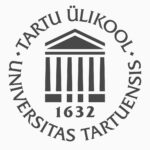#UT-001
SUMMARY
Our new, patent protected, preeclampsia (PE) prognosis method relies on a panel of at least four biomarkers, which concentrations in maternal blood serum are simultaneously measured in a single test tube, and at least one clinical cofactor.
With our method, it is now possible to predict the development of PE or the absence of development of PE as early as 10-14 g. week with a high accuracy (>93%). Moreover, the method of the invention drastically reduces the number of false- positive/negative and inconclusive predictions (<7%). The invention has been validated with blood samples collected within gestational weeks 10-14.
BACKGROUND
Preeclampsia (PE) is a severe complication during pregnancy, characterized by high blood pressure and organ dysfunction, affecting both the mother and fetus. Conventional assessment of PE risk is mainly based on maternal pre-known susceptibility factors and medical history. This model has low detection rate (~40%) for subsequent manifestation of PE. Therefore, application of other PE alerting parameters to be measured during the pregnancy have been seeked for.
Current methods for predicting PE rely on clinical symptoms (e.g., hypertension, proteinuria) and biomarkers like PAPP-A and PIGF, but these lack sensitivity and specificity. Existing screening tests often require invasive procedures (e.g., uterine artery Doppler) or have limited applicability due to variability in laboratory measurements. As this is not a routine procedure in most clinics, there are limitations to develop this method further as a screening tool for a wide community of pregnant women.
FEATURES AND KEY BENEFITS
- Early and Accurate Prediction: The method allows for early prognosis of PE (as early as 10+0 to 14+1 gestational weeks), enabling timely interventions.
- High Sensitivity and Specificity: The combination of multiple biomarkers and clinical factors improves the accuracy of prediction compared to existing methods.
- Drastic reduction of false positive, false negative and inconclusive results;
- Simplicity: The test uses a simple blood sample, avoiding invasive procedures.
- Quick, reliable, easy to standardize and cost-effective method when performing the biomarkers
REFERENCES
EP Patent application 21765846.7 pending
US Patent application US18022000 pending
AVAILABLE
for licensing, research collaboration
CONTACT
University of Tartu, Centre for Entrepreneurship and Innovation, tto@ut.ee
Alina Paas, alina.paas@ut.ee
Back


